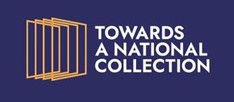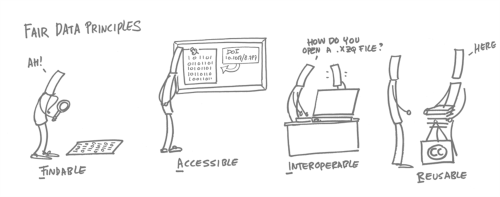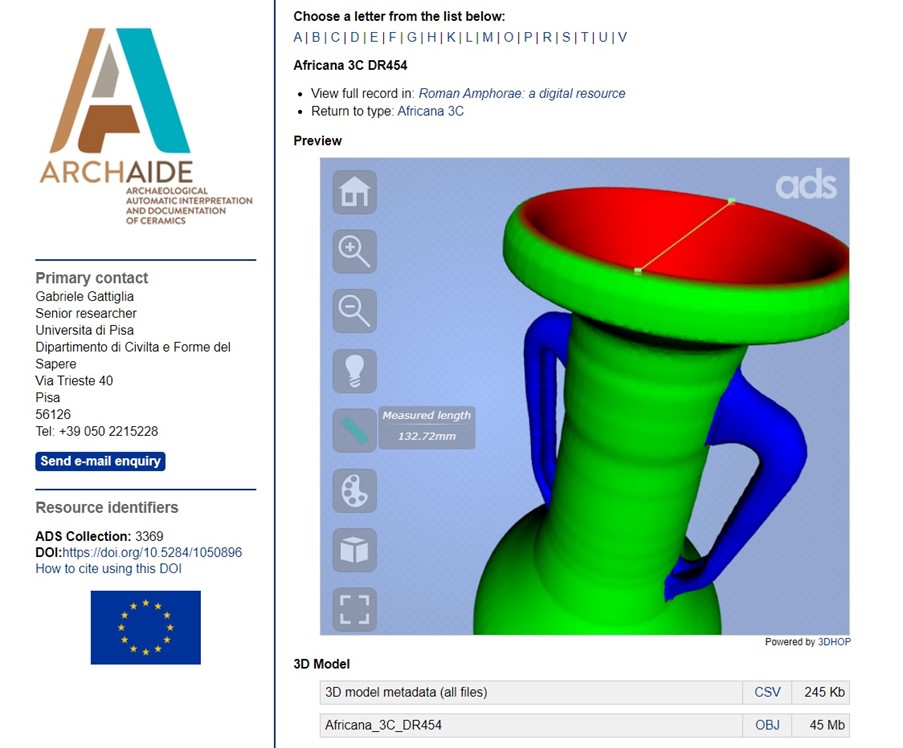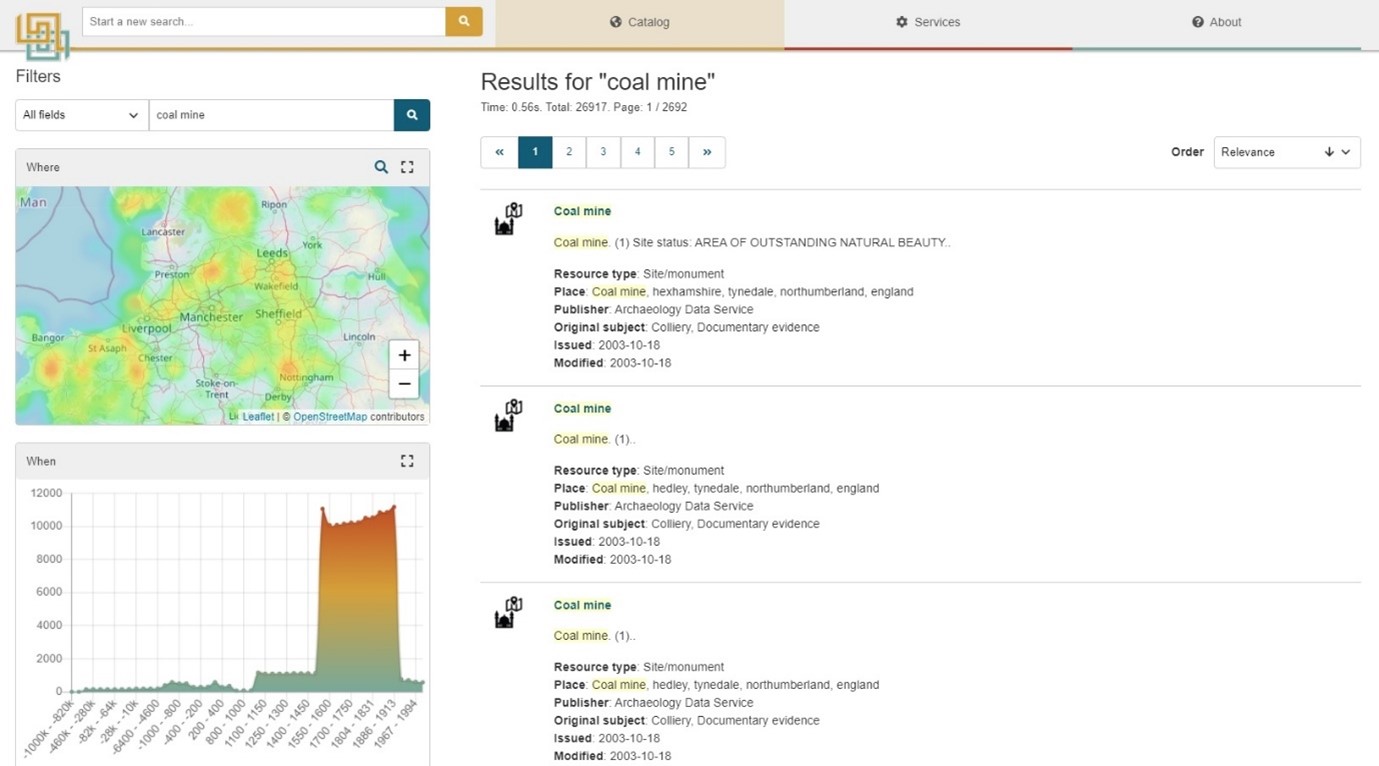Olivia Foster is Digital Archives Officer at the Archaeology Data Service in York, UK
Staff at the Archaeology Data Service (ADS) have been busy over the last year archiving the data deposited with us, collaborating with partners and rolling out the new OASIS online archaeological reporting system. Digital preservation is one of the core activities of the ADS and as a digital archive we preserve and make publicly accessible archaeological and heritage data in our archives and the ADS library.
 One of the impacts of COVID-19 on the heritage sector has been more digital materials being created by museums as they have engaged with audiences online during the pandemic. Over the last year the ADS has been involved with the Making it FAIR project, which is one of three COVID-19 digital research projects funded by the Towards a National Collection programme.
One of the impacts of COVID-19 on the heritage sector has been more digital materials being created by museums as they have engaged with audiences online during the pandemic. Over the last year the ADS has been involved with the Making it FAIR project, which is one of three COVID-19 digital research projects funded by the Towards a National Collection programme.
The project worked with eight small museums to create online content based on their collections and the ADS provided guidance on ensuring the materials created were Findable, Accessible, Interoperable and Reusable (FAIR). Creating content with the FAIR principles in mind is especially important considering Digital Materials in Museums and Galleries was added to the DPCs ‘BitList’ of Digitally Endangered Species in 2019. The project was a great opportunity for the ADS to promote awareness of digital preservation in the museums sector and we’re excited about the innovative digital heritage projects currently being undertaken and how this content can be preserved and reused in the future.

(after Bezjak et al. 2018.)
We’re always on the look out for how our data is being reused, and understanding who is using our data and what their needs are is an important consideration for the ADS as a digital archive. One of my favourite examples of ADS data being reused is the ArchAIDE project. The ArchAIDE application is a tool that uses automated image recognition to help archaeologists identify pottery during fieldwork and post-excavation analysis.
The ArchAIDE team required a reference collection of pottery profiles to create the image recognition software and drawings held in one of the ADS’ most popular archives, Roman Amphorae: a digital resource, were used as training data for the algorithm. Hundreds of 2D and 3D models were created using the drawings in the archive, which as well as playing an important role in the creation of the application, were archived by the ADS and have been used to update the original Roman Amphorae archive. Interactive 3D models, such as the ones below, can be viewed in the archive using 3DHOP viewer and downloadable files in OBJ format have been added for use in 3D modelling software, and for 3D printing.

3D models of pottery in the ARCHAIDE Portal for Publications and Outputs archive. ArchAIDE was created by the ArchAIDE consortium and was a European Union Horizon 2020 research and innovation programme.
It’s been fantastic to see data archived by the ADS being reused in this way and I’m sure that the archived datasets and the ArchAIDE tool will continue being used by researchers, the archaeological community and the general public for many years in the future.
![]() Another exciting long-term project that the ADS is part of is ARIADNEplus, an online portal which allows searching of archaeological archives from around the world. The beta version of ARIADNEplus was launched in the UK earlier this year and the ADS has provided over 1.4 million resources to the portal so far. Over the next two years a lot more data will be added to the portal, along with many new features like multilingual searching (i.e. one term will search across many languages).
Another exciting long-term project that the ADS is part of is ARIADNEplus, an online portal which allows searching of archaeological archives from around the world. The beta version of ARIADNEplus was launched in the UK earlier this year and the ADS has provided over 1.4 million resources to the portal so far. Over the next two years a lot more data will be added to the portal, along with many new features like multilingual searching (i.e. one term will search across many languages).

The ARIADNE portal in action. Resources in the portal can be filtered in many ways, such as by subject terms, location, and time period.
ARIADNE has brought together resources from across Europe for archaeological research, learning and teaching, and the project has made a tremendous contribution to ensuring archaeological data from around the world is more interoperable and discoverable. The portal can be explored on the ARIADNE website and we’re excited to see what the future holds for the project and for digital archiving in archaeology.
Anichini, F. et al. (2020). Developing the ArchAIDE Application: A digital workflow for identifying, organising and sharing archaeological pottery using automated image recognition, Internet Archaeology 52. https://doi.org/10.11141/ia.52.7.
ArchAIDE consortium. (2019). ARCHAIDE Portal for Publications and Outputs [data-set]. York: Archaeology Data Service [distributor] https://doi.org/10.5284/1050896.
